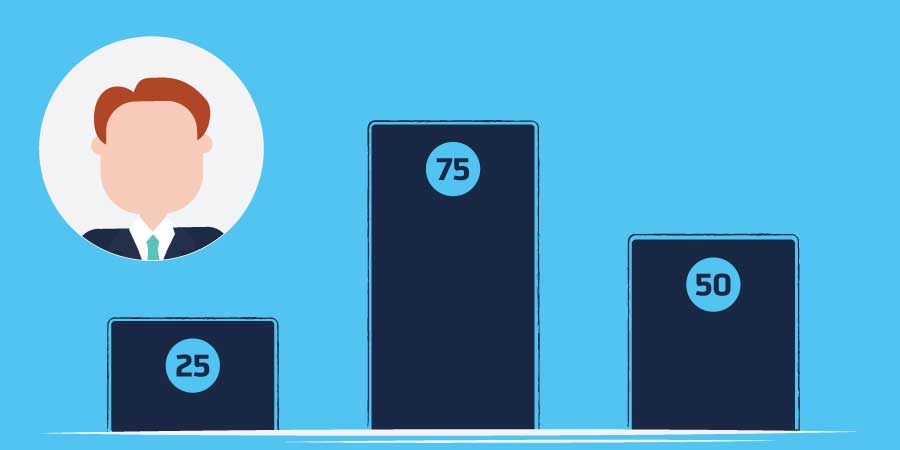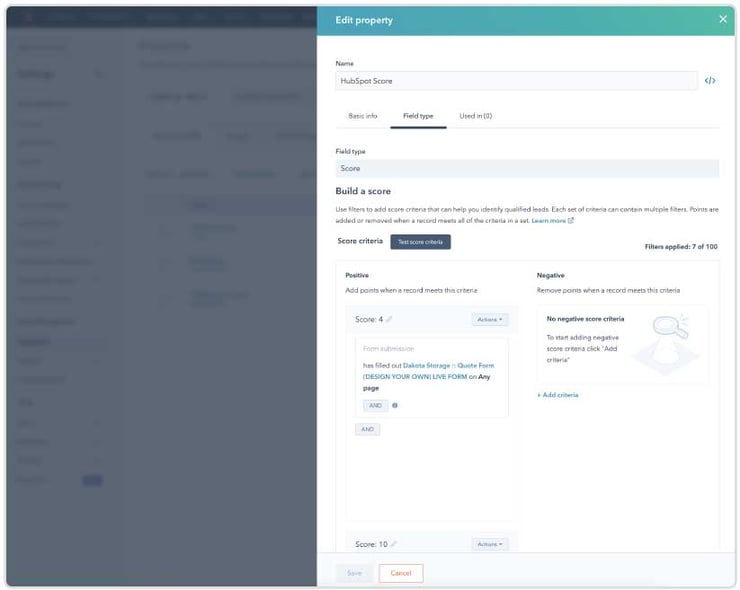What is HubSpot Lead Scoring & How Does It Benefit B2B Businesses?
 Taylor
|
Taylor
|

What if your CRM could rank leads and alert you when they’re ready to engage?
It happens all too often. B2B manufacturing businesses set up website forms to capture visitor information and collect valuable contacts at trade shows or networking events. But, once this information is in the database, they don't know what to do with it. Often this data ends up sitting in their CRM, which causes the lead to grow colder and colder.
Has this happened to you?
What if I told you there was a way to rank leads as they're added to your CRM and a way to set up automation workflows that alert you when a potential customer takes action, giving you the window of opportunity to engage with them before they go cold?
It may be easier than you think.
What is Lead Scoring?
According to HubSpot, lead scoring is “the process of assigning values, often in the form of numerical ‘points’ to each lead you generate for the business. You can score your leads based on multiple attributes, including the professional information they’ve submitted to you and how they’ve engaged with your website and brand across the internet.”
Once lead scoring is properly set up in CRM, you’re able to prioritize the leads that come in quicker and easier. This allows sales teams to spend less time cold calling massive contacts lists and focusing on leads that show interest in your company’s offerings. All of this can be done with software that includes lead scoring like HubSpot CRM or Salesforce. In this article, we’ll be referring to HubSpot lead scoring and the systems and processes in relation to HubSpot CRM and HubSpot Marketing HubTM. However, these ideas can be applied to multiple software.
What Attributes Are Needed to Set Up Successful Lead Scoring?
As we've helped B2B manufacturing businesses set up marketing automation over the years, we know it's one thing to set up a lead scoring model but entirely another to make it successful.
The first step in lead scoring workflows is coming up with criteria. This information can come from various sources like Ideal Customer Profile, personas, or talking to your salespeople to understand what makes a good lead. Here's a list of properties we often find helpful when classifying lead attributes:
- Industry
- Annual revenue
- Number of employees
- Location
- Marketing email engagements
- Website form submissions
Start working through a list with all your core departments that detail "good" and "bad" lead attributes. We recommend documenting these in a spreadsheet because it's an easy way to keep track of information. Once you have a good list, the next step is to determine their values. It's good to go through each attribute individually to pinpoint what values make a lead qualified.
What’s The Best Way to Implement Lead Scoring?
After you’ve come up with good and bad attributes and assigned a value, it’s time to create your lead scoring automation. To create HubSpot lead scoring workflows, you’ll need to start in the properties section and select the “HubSpot Score” property. You’ll see two areas in this field to add the positive (good) and negative (bad) attributes. You can add the first positive attribute by clicking “add new set” — here’s an example of what you’ll see when you start adding your sets:

For this example, we added X points to a lead that signs up for a webinar. Signing up for the webinar was a sign of positive engagement, telling you that your lead enjoys your content and topics. This, paired with even more positive and negative attributes, will shape the total score. You’ll want to continue building out both the positive and negative sides until you feel you’ve accounted for all essential actions a lead can take that are both good and bad.
Figuring Your Score Totals and Thresholds
Now that your lead flow is up and running, you'll have to determine what score the lead should reach before a salesperson is alerted. If the score is too low, the prospect will likely be uninterested in your pitch and not ready to make a decision. If it's too high, you might already have missed your opportunity.
To get to the perfect score, it's best to let your workflows collect data for a while. Then you can analyze the leads and ideal-fit prospects to see what score they had when they initiated their buying interests. Once this is determined, you can set up automation to optimize the processes. For example, you can set up internal notifications via automated workflows that notify a salesperson when a lead hits the right score.
Get Started With Your Lead Scoring Now
Lead scoring is a valuable tool that allows your sales team to spend more focusing time and energy on highly qualified leads. With the right systems in place, you'll be able to set up automation to create a list of warm leads for your sales team. If you're converting website visitors into leads, that's great, but don't let them go to waste. Make sure you have the best processes in place to save you time and to help you close more ready-to-buy leads.
Need help getting a lead scoring workflow set up? We're here to help. Schedule a free consultation to learn how lead scoring can efficiently push you closer to your sales goals and what it takes to make it happen.
Subscribe to Our Blog
Stay up to date with the latest marketing, sales, and service tips.


